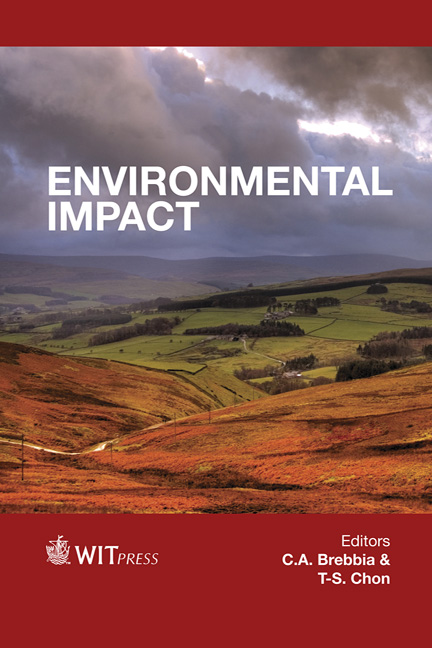Restoration Of A Degraded Area Using Soil Tillage Systems In Campinas, São Paulo, Brazil
Price
Free (open access)
Transaction
Volume
162
Pages
10
Page Range
243 - 252
Published
2012
Size
3,671 kb
Paper DOI
10.2495/EID120221
Copyright
WIT Press
Author(s)
G. A. de Medeiros, L. A. Daniel, J. R. de F. Lucarelli, C. R. Espíndola, A. I. Ribeiro, F. A. G. V. Reis & R. M. Longo
Abstract
In Brazil the intensive agriculture use, mainly pasture, is the main cause of the presence of extensive areas of degraded lands. This study aimed to assess the impact of different soil management practices in a pasture degraded area used as garbage disposal. The experiment was performed at the Faculdade de Engenharia Agrícola, Universidade Estadual de Campinas – UNICAMP, in Campinas, state of São Paulo, Brazil, from 1990 to 1996. This area has undergone a process of recovery through removal of trash deposited on the surface, in 1985, levelling of soil, followed by application of limestone, subsoiling, planting of legumes (Crotalaria juncea) and crop rotation (soybean and maize). Since 1990 only popcorn maize was grown and established plots managed with different soil tillage systems, including harrow, chisel plow, moldboard plow, no tillage, disk plow and revolving hoe. One plot was planted exclusively with guinea grass (Panicum maximum) to serve as a reference for minimum loss of soil and another grown on a downhill direction to correspond to the expected maximum erosion. There were differences in sediment loss, nutrient loss and productivity of the popcorn maize in the period analyzed. The chisel plow and no tillage treatments caused the slightest loss of soil and nutrients, compared to other tillage systems. The results show that the soil management systems influenced the physical and chemical characteristics of soil, allowing an economical and environmental recovery of the area, providing the conditions for grain agricultural production. Keywords: land degradation, soil restoration, erosion, environmental impact.
Keywords
land degradation, soil restoration, erosion, environmental impact.





